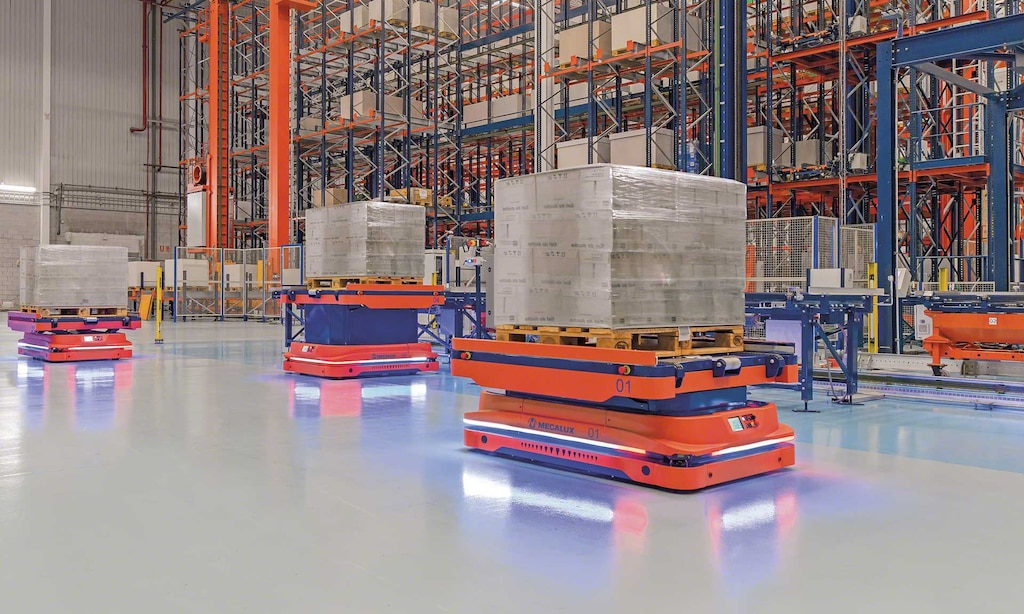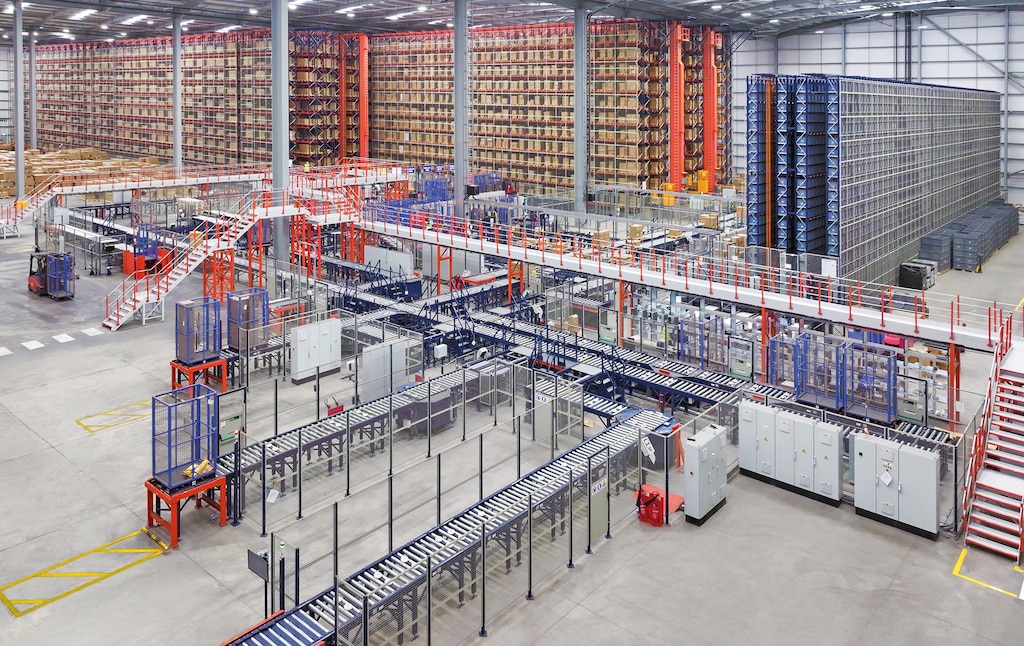
New MIT–Mecalux study finds AI now embedded in 60% of warehouses, reshaping productivity and workforce models worldwide
Research from Mecalux and the MIT Intelligent Logistics Systems Lab, based on a survey of 2,000+ logistics leaders, shows rapid automation and AI adoption, 2–3 year payback periods and rising demand for high-skill warehouse roles.
As retailers brace for the annual surge of Black Friday demand, a new study from Mecalux and the MIT Intelligent Logistics Systems (ILS) Lab at MIT’s Center for Transportation and Logistics reveals that the warehouses powering today’s global supply chains have entered a new era of intelligence. The research, drawing on responses from over 2,000 supply chain and warehousing professionals across 21 countries, shows that artificial intelligence and machine learning are no longer experimental tools but core drivers of productivity, accuracy and workforce evolution.
With more than 9 out of 10 warehouses now using some form of AI or advanced automation, the sector has reached a surprising level of maturity. Over half of surveyed organisations report operating at advanced or fully automated maturity levels, especially among larger businesses with complex multi-site logistics networks. Warehouses have moved well beyond isolated pilots in that AI increasingly supports day-to-day workflows, including order picking, inventory optimisation, equipment maintenance, labour planning and safety monitoring.
Nearly 9 out of 10 warehouses now operate at automation levels beyond basic processes
"The data show that intelligent warehouses outperform not only in volume and accuracy, but in adaptability,” says Javier Carrillo, CEO of Mecalux. “As peak season approaches, companies that have invested in AI aren’t just faster — they’re more resilient, more predictable and better positioned to navigate volatility."
The study also finds that AI investments are paying off more quickly than many expected. Most businesses now dedicate between 11% and 30% of their warehouse technology budgets to AI and machine-learning initiatives, and the typical payback period is just two to three years. These returns stem from measurable gains in inventory accuracy, throughput, labour efficiency and error reduction. They also reinforce a shift from exploratory spending to long-term capability building. Cost savings, customer expectations, labour shortages, sustainability goals and competitive pressure all drive these investments, demonstrating that AI’s value extends far beyond automation alone.

Despite this progress, organisations continue to face challenges as they scale AI across their operations. “The hard part now is the last mile: integrating people, data and analytics seamlessly into existing systems,” says Dr. Matthias Winkenbach, Director of the MIT ILS Lab. The leading barriers include technical expertise, system integration, data quality and implementation cost, reflecting the underlying work required to connect advanced tools with legacy systems. Even so, companies report strong foundations in data and project management, and they identify better tools, clearer roadmaps, expanded budgets and stronger internal expertise as key accelerators for continued adoption.
Crucially, the report challenges persistent fears about automation replacing human workers. Rather than supplanting human workers, AI is contributing to higher productivity, greater job satisfaction and expanded workforce opportunities. More than three-quarters of surveyed organisations saw a rise in employee productivity and satisfaction after implementing AI tools, and over half reported growing the size of their workforce. New roles are emerging across the board, including AI/ML engineers, automation specialists, process-improvement experts and data scientists — evidence that intelligent automation is expanding, rather than reducing, the human role in warehouse operations.
The study captures a representative picture of automation maturity and AI/ML adoption across industries and regions
Looking ahead, nearly every company surveyed plans to scale up its use of AI over the next two to three years. An overwhelming 87% expect to increase their AI budgets, and 92% are currently implementing or planning new AI projects. The next frontier, the report shows, will centre on decision-making technologies — especially generative AI. Businesses identify generative AI as the single most valuable method in today’s logistics facilities, citing applications such as automated documentation, warehouse-layout optimisation, process-flow design and even code generation for automation systems. As these capabilities advance, AI will help a growing number of warehouses move from predictive insight to automated action.
“Traditional machine learning is great at predicting problems, but generative AI actually helps you engineer the solution,” says Dr. Winkenbach. “That’s why companies see it as the biggest value generator in the warehouse today. Ultimately, the measurable gains from automation are productivity wins, making existing systems work smoother, faster and with fewer disruptions.”
The study underscores that as the logistics sector enters the year’s busiest season, the warehouses behind Black Friday orders are not only becoming more automated, but more intelligent systems. With AI boosting performance, supporting workers and enabling new capabilities across global networks, the coming years propose even deeper integration of data and decision-making into the core of warehouse operations.
